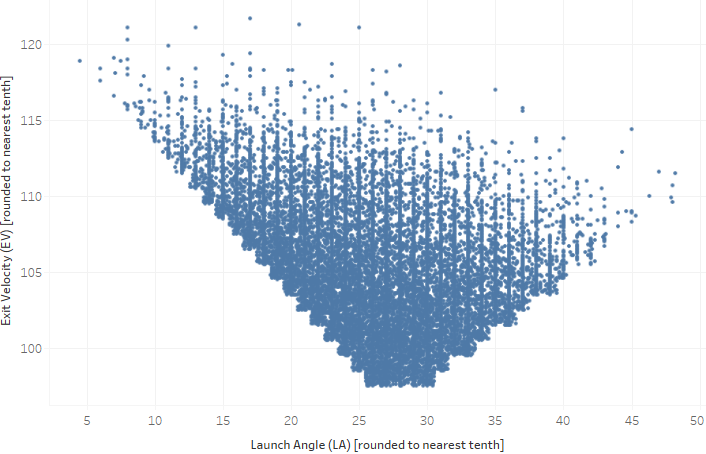A(n Unnecessary) Sprint Speed Adjustment for xBA
Hi! Disclaimer: In this post I use raw Statcast data to calculate expected batting average (xBA). Evidently the raw data do not include the sprint speed adjustment that the Statcast folks said they made. That adjustment only shows up on player pages and in the search. This explains why it seemed to me an adjustment had not been made! The xBA values on player pages are much closer than the raw values and look similar to what I have presented below, and it explains my confusion herein regarding the matter.
So, this post reinvents the wheel a bit. Perhaps it can serve as a mini-primer or -tutorial for you. At the very least it can serve as further validation of the work that the folks at Statcast completed and instituted a couple of years ago. Just keep in mind that the original post below remains intact, completely unedited.
Thanks for reading!
* * *
It has always seemed rather obvious to me that Statcast’s expected batting average (xBA) failed to properly account for a hitter’s speed (“sprint speed”). It seemed like fast hitters routinely outperformed their xBAs while slower hitters underperformed. In looking at a Statcast-era leaderboard (2015-21) of differentials between actual and expected batting averages on ground balls, obvious names rise to the top: Delino DeShields, Dee Strange-Gordon, Eduardo Núñez, Billy Hamilton, Jose Altuve, Jonathan Villar, Norichika Aoki, Mallex Smith, Jean Segura, Adam Eaton, Starling Marte… the list of players who have historically outperformed their xBAs by the widest margins are (were) all elite speedsters. At the other end of the spectrum, post-prime sluggers: Justin Smoak, Chris Davis, Logan Morrison, Jay Bruce, Kendrys Morales, etc. etc.
I thought this exact phenomenon, which is not a revelation by now, had once nudged the Statcast team to apply a sprint speed adjustment to xBA. Apparently, this happened sometime between the 2018 and 2019 seasons. Here’s the original snippet, which I very lightly edited for clarity:

